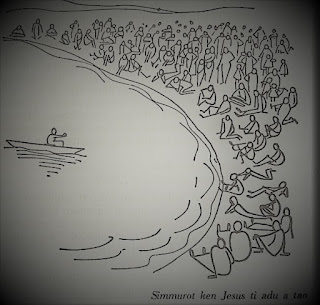The Passion of Jesus in the Gospel of Mark
Here's a quick glimpse of the story of the passion of Jesus in the Gospel of Mark (this Palm Sunday's gospel reading - 3/28/2021), first published in the SVD Bible Diary, Word in Other Words, 2021.
Or you may watch my talk (Taglish) about this topic posted on YouTube. Please click HERE for the link.
Palm Sunday as Passion Sunday
It is the day when we listen once again, read in our churches, to the greatest story ever told: the passion and death of Jesus.
All four Gospels (Matthew, Mark, Luke, and John) contain a lengthy story of the passion of Jesus. Comparing the four narratives, we see a general similarity in narrative sequence but a considerable difference in content. Each evangelist had their own way, literary and theological, of presenting the “good news” of the paschal mystery.
The formation of the gospels, Jesus’ passion story seems to have been the first to become a part of the overall story of Jesus, the first story to take shape in the gospels. Notice how the passion story in each of the four gospels can stand as an independent story. It is a coherent narrative, unlike the more staccato structure of the rest of the gospel stories or materials.
The Passion Story in Mark
For this year’s Palm Sunday, the assigned gospel reading is from Mark’s. This gospel is generally regarded as the earliest written gospel. It stands out as the gospel that has Jesus’ passion and death as its centerpiece. The whole gospel is oriented towards the passion of Jesus, a passion narrative with a long introduction.
The reading focuses on the last three scenes of Jesus’ passion: The Roman Trial, the Crucifixion and Death, and the Burial in the Tomb. All in one day – on the first Good Friday. The evangelist Mark chronicles Friday’s events in careful three-hour intervals (like Roman military watch times, which also reflect the liturgical hours of prayer for the early Christians):
6 AM “As soon as it was morning” (15:1)
9 AM “It was nine o’clock in the morning” (15:25)
12 Noon “When it was noon” (15:33)
3 PM “At three o’clock” (15:34)
6 PM “When evening had come” (15:42)
It thus shows that the story of the Passion of Jesus was preserved and developed within the liturgical gathering of the early Christians. When today we gather to celebrate it, we connect ourselves with our ancestors in faith, including their anxieties and hopes; and their belief in the Risen Lord.



Comments
Post a Comment